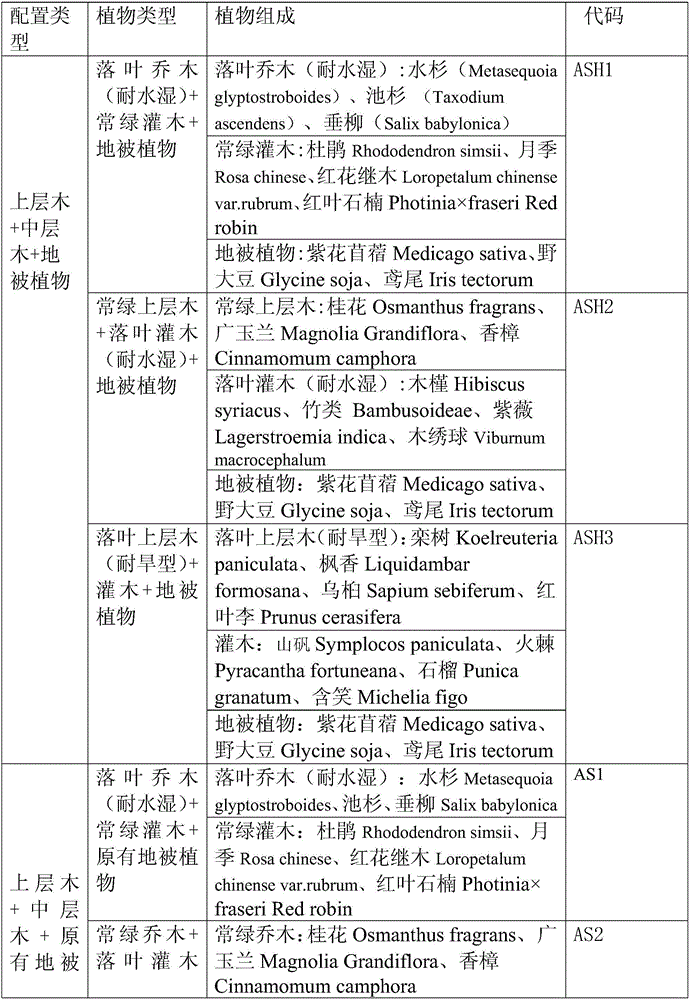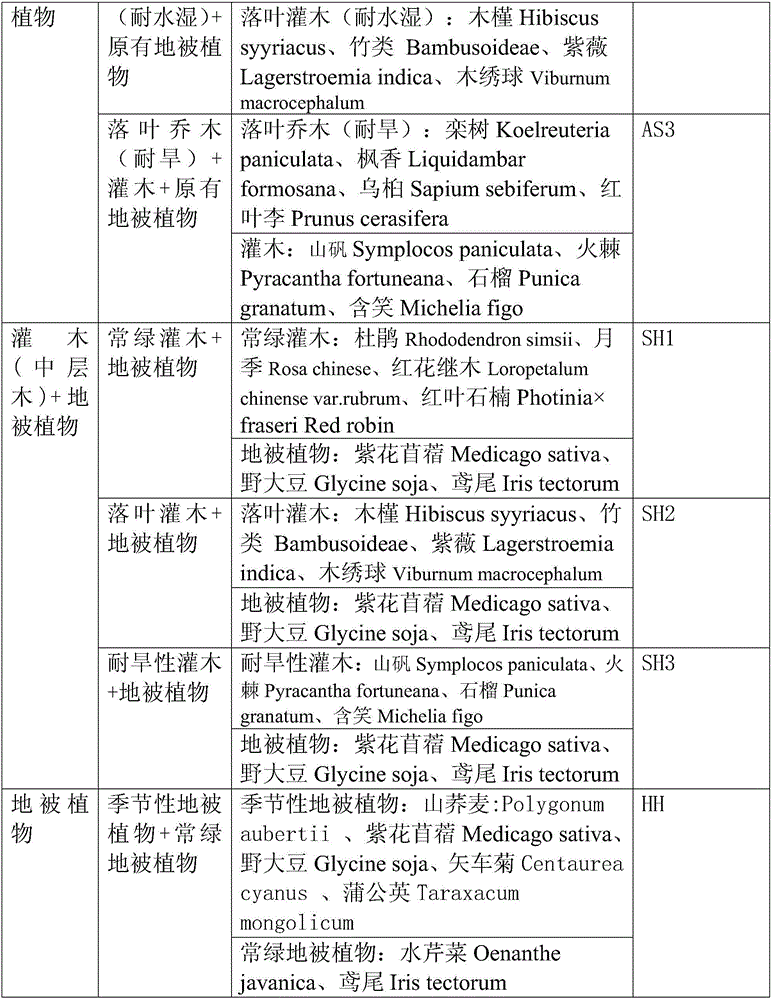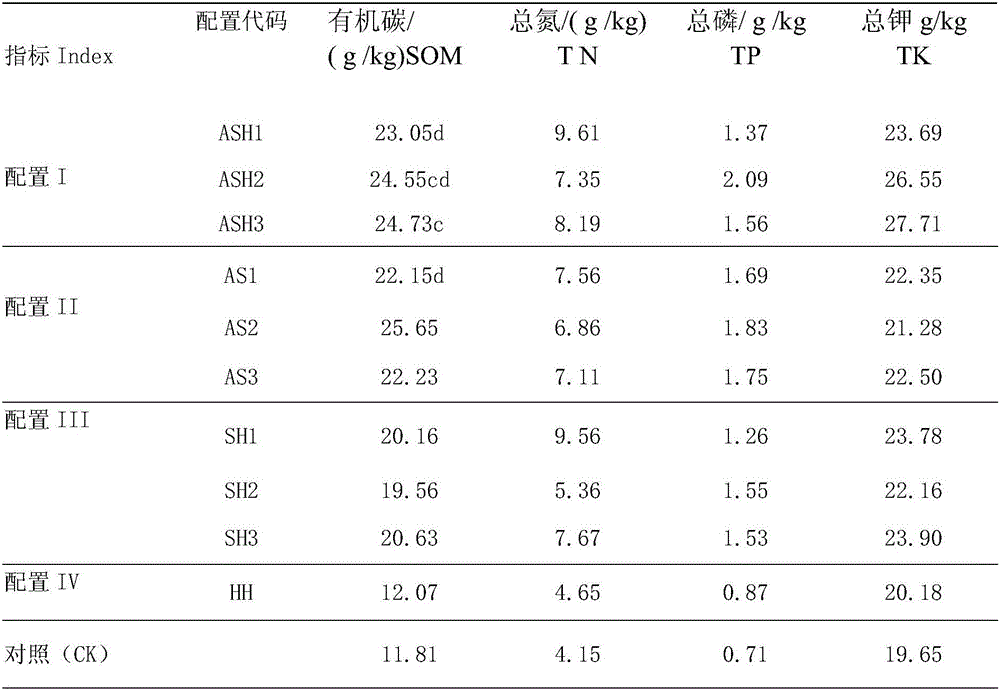Method using native landscape plant to restore return-land-to-lake wetland soil
A phytoremediation and landscape technology, which is applied in the fields of site preparation, invasive species monitoring, climate change adaptation, etc., can solve the problems of lack of research and development of artificially introduced vegetation to assist in the restoration of degraded wetland soil, achieve lasting landscape and social benefits, restore soil, improve The effect of plant diversity
- Summary
- Abstract
- Description
- Claims
- Application Information
AI Technical Summary
Problems solved by technology
Method used
Image
Examples
Embodiment 1
[0039] Embodiment 1 (referring to ASH1, ASH2, ASH3 in table 1): upper wood+middle layer wood+ground cover mixed species pattern:
[0040] The distribution of the root system of the different configurations of the plants is from shallow to deep, and the degree of soil restoration is relatively deep. Different configurations have rich landscape seasonal changes and good landscape effects. Plant communities with complex hierarchical structures and obvious seasonal changes have higher landscape value than those with simple structures.
Embodiment 2
[0041] Embodiment 2 (referring to AS1, AS2, AS3 in Table 1): upper wood + middle wood + original ground cover: keep the original ground cover, ground cover is fast, water retention effect is better, introduce arbor and shrub landscape plants, rich Species diversity, to avoid destroying the natural diversity in the wild state by planting a small number of plants.
Embodiment 3
[0042] Example 3 (see SH1, SH 2, SH3 in Table 1): middle wood + ground cover: middle wood is easy to survive and quickly forms an advantage.
PUM
 Login to View More
Login to View More Abstract
Description
Claims
Application Information
 Login to View More
Login to View More - R&D
- Intellectual Property
- Life Sciences
- Materials
- Tech Scout
- Unparalleled Data Quality
- Higher Quality Content
- 60% Fewer Hallucinations
Browse by: Latest US Patents, China's latest patents, Technical Efficacy Thesaurus, Application Domain, Technology Topic, Popular Technical Reports.
© 2025 PatSnap. All rights reserved.Legal|Privacy policy|Modern Slavery Act Transparency Statement|Sitemap|About US| Contact US: help@patsnap.com



